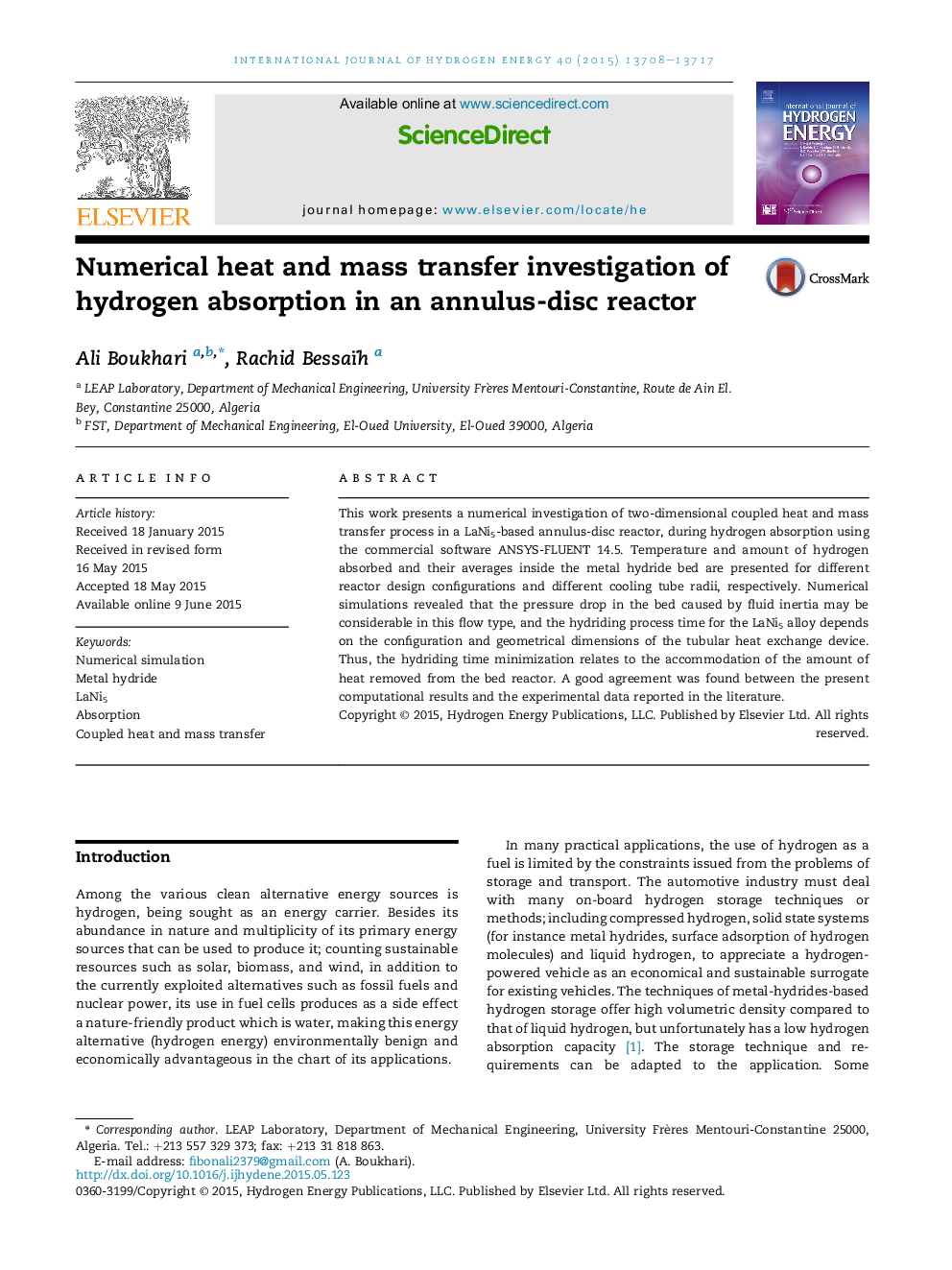| Article ID | Journal | Published Year | Pages | File Type |
|---|---|---|---|---|
| 1274663 | International Journal of Hydrogen Energy | 2015 | 10 Pages |
•Numerical simulation of coupled heat and mass transfer in an annulus-disc reactor.•Investigation of coupled heat and mass transfer process during hydrogen absorption.•Effect of the annulus-disc reactor configuration on hydriding time was studied.•The pressure drop caused by fluid inertia may be considerable in this flow type.•The accommodation of the amount of heat removed minimizes the absorption time.
This work presents a numerical investigation of two-dimensional coupled heat and mass transfer process in a LaNi5-based annulus-disc reactor, during hydrogen absorption using the commercial software ANSYS-FLUENT 14.5. Temperature and amount of hydrogen absorbed and their averages inside the metal hydride bed are presented for different reactor design configurations and different cooling tube radii, respectively. Numerical simulations revealed that the pressure drop in the bed caused by fluid inertia may be considerable in this flow type, and the hydriding process time for the LaNi5 alloy depends on the configuration and geometrical dimensions of the tubular heat exchange device. Thus, the hydriding time minimization relates to the accommodation of the amount of heat removed from the bed reactor. A good agreement was found between the present computational results and the experimental data reported in the literature.
